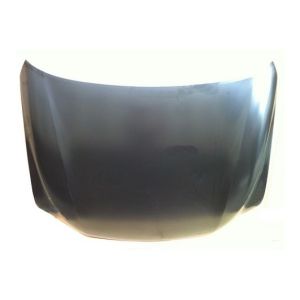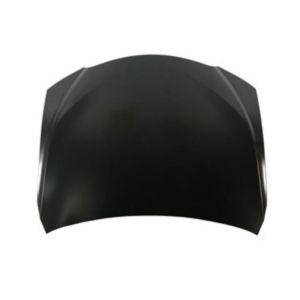When Jack Frost starts nipping at your nose, it's a subtle reminder that the roads are not as forgiving as they once were. You've probably heard that preparation is key, but when it comes to navigating snowy streets, it's more than just a saying-it's your best defense.
Ensuring your vehicle is equipped with winter tires and maintaining a generous distance from the car ahead can make all the difference. But what about those unexpected icy patches, or sudden whiteouts?
Stick around to uncover essential maneuvers that could steer you clear of winter woes.
Why Is Driving in Snow Dangerous?
Driving in snow poses significant risks due to reduced visibility and the high potential for losing vehicle traction.
When you're navigating through snowy conditions, the hazards aren't just about the thick blanket of snow that covers the road - icy road conditions can sneak up on you, making every turn and stop a potential hazard. Imagine tires losing grip suddenly on a slick patch-this is a common scenario in snow driving.
Icy conditions reduce the friction between your tires and the road, significantly increasing the likelihood of sliding uncontrollably. It's crucial to recognize these dangers, as underestimating them can lead to severe accidents. Always be alert to the changing road textures and the possibility of ice under the snow.

6 Tips for Driving in Snow
As you prepare to tackle snowy roads, it's crucial to consider both your vehicle and your driving approach. Make sure you're equipped with all-wheel or four-wheel drive and fit your car with winter tires to enhance traction.
Additionally, carry essential supplies, drive smoothly to maintain control, and always leave extra distance between you and other vehicles to ensure safer stopping distances.
Use Awd or 4WD
Utilizing all-wheel drive (AWD) or four-wheel drive (4WD) systems can significantly enhance your vehicle's handling and safety in snowy conditions. AWD benefits include better acceleration and stability by distributing power to all four wheels, which helps prevent slipping and sliding on slick surfaces.
However, it's important to be aware of 4WD limitations. While 4WD improves traction, it doesn't necessarily improve braking.
You'll still need to be cautious and maintain a safe speed, as 4WD can give a false sense of security. Remember, these systems aid in handling but don't eliminate the risks associated with driving on snow and ice. Always adjust your driving to the conditions.
Carry the Right Supplies
Equipping your vehicle with the right supplies can dramatically improve your safety and preparedness for winter driving. Always pack emergency kits that include essentials like a first-aid kit, flashlight, batteries, and warm blankets. Don't forget water and non-perishable snacks, crucial if you're stranded.
Incorporate traction aids such as sand or kitty litter to help with icy conditions. These can provide the necessary grip if your tires get stuck in snow or ice. Also, carrying a sturdy snow shovel will assist in clearing snow from around your tires and vehicle.
Being well-prepared with these supplies isn't just convenient; it's a significant step toward ensuring your safety during those unpredictable winter drives.
Drive Smoothly
After ensuring your vehicle is stocked with the right supplies for winter conditions, focus next on mastering your driving technique in the snow. It's crucial to maintain smooth acceleration and gentle braking.
Jerky movements can cause your tires to lose grip, leading to skids. Instead, apply the gas and brakes as if you're handling something fragile. This approach minimizes the chances of tire slippage on slippery surfaces.
Fit Winter Tires
Fitting winter tires on your vehicle dramatically enhances your safety when driving on snow-covered roads. These specialized tires are designed with deeper tire tread patterns and softer rubber compounds that maintain flexibility in cold temperatures.
This not only improves traction control but also shortens braking distances significantly. You'll appreciate the enhanced grip and stability, especially on slippery surfaces. It's essential to ensure that all four tires are winter tires to avoid uneven driving dynamics which can lead to a loss of control.
Remember, while all-season tires might suffice in mild winter conditions, they generally can't match the performance of dedicated winter tires in severe weather. So, don't hesitate to make the switch as the temperature drops.
Leave Extra Distance Between You and Other Cars
Since visibility and traction are significantly reduced during snowy conditions, it's crucial to leave extra distance between you and the car ahead. This extra space allows you more time to react and a safer braking distance if you need to stop suddenly. Traction control helps, but it can't overcome the laws of physics.
Here are key reasons to increase your following distance:
- Reduced Traction: Snow and ice diminish tire grip, making it harder to start, stop, and turn.
- Longer Braking Distance: Slippery roads increase the distance required to come to a complete stop.
- Limited Visibility: Falling snow can obscure your view, making it harder to judge the speed and distance of other vehicles.
- Unpredictable Behavior: Other drivers might not be as cautious, requiring you to have additional space to react safely.
Plan Ahead
Planning ahead is crucial when driving in snowy conditions. Terrain awareness and route familiarity can significantly enhance your safety. You'll need to anticipate upcoming terrain changes, such as hills or sharp turns, and prepare accordingly. Knowing your route well allows you to foresee challenging spots before you reach them, giving you time to adjust your driving strategy.
It helps to avoid surprises that can lead to accidents. Keep an eye on road conditions and updates, especially if your route includes areas prone to heavy snowfall or ice. Remember, even familiar roads can present new challenges under snow cover, so stay alert, take it slow, and always be prepared for the unexpected when you're out there.
How to Take Care of Your Car in Winter?
Winter demands extra attention to your vehicle to ensure it performs reliably in cold and snowy conditions. Proper car maintenance, especially a battery check, is crucial as temperatures drop.
Here's how to keep your car in top shape:
- Battery Check: Cold weather can reduce battery capacity. Get it tested and replace if necessary to avoid startup issues.
- Antifreeze Levels: Ensure your coolant system is filled with antifreeze, not just water, to prevent freezing.
- Tire Inspection: Check tire pressure and tread depth. Consider switching to winter tires for better traction.
- Wiper Blades and Fluid: Replace worn blades and top up with winter-grade washer fluid to improve visibility during snowfall.
Follow these tips to ensure your car is winter-ready!
Conclusion
As you gear up to tackle the snow, remember, it's better to be safe than sorry. Arm your car with winter tires, keep your driving smooth, and always have those essential supplies on hand. Don't forget to leave that extra space between vehicles and plan your route meticulously.
Taking these steps will not just keep you safer, but also turn a potentially hair-raising ride into a smooth sailing journey. Stay warm and drive safely!
FAQs (Frequently Asked Questions)
Can Regular Tires Be Used Safely in Light Snow Conditions?
- You can use regular tires in light snow if they have adequate tire tread for snow traction. However, they're not as safe as winter tires, which are specifically designed for snowy conditions.
How Does Cold Weather Affect Hybrid or Electric Vehicle Batteries?
- Just like your phone struggles in the cold, your hybrid or electric vehicle's battery performance dips. Cold weather reduces charging efficiency, demanding more frequent charges and potentially shorter trips. Stay charged!
Are Manual Transmission Vehicles Better for Snow Driving?
- You might find manual transmission vehicles advantageous for snow driving due to better clutch control and precise gear selection, allowing for more effective handling on slippery surfaces.







